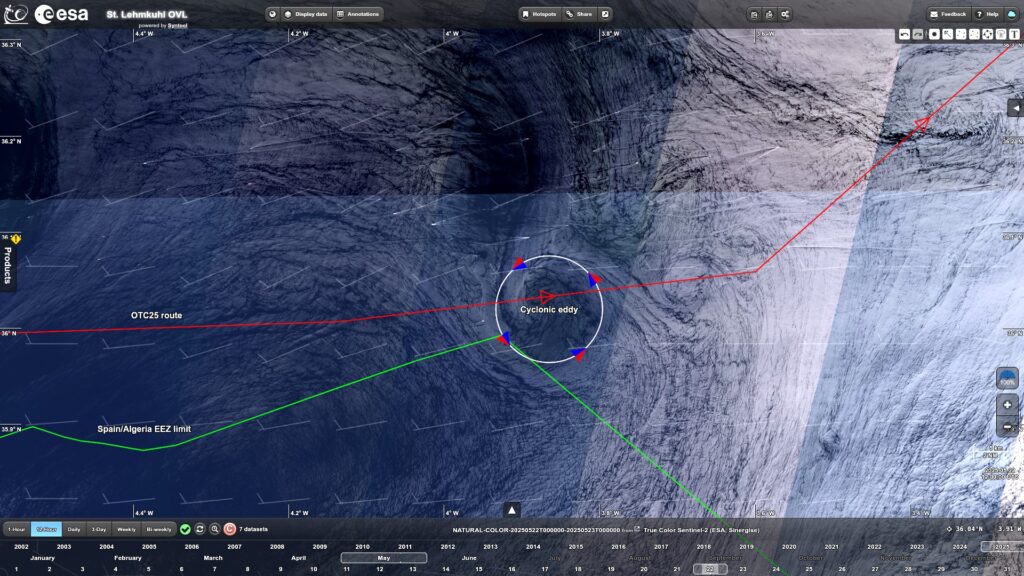Post from: Rudy Castorina (Ocean Media Lab) & Craig Donlon (ESA)
ESA astronaut Pablo Álvarez joins the Advanced Ocean Training Course not as a space explorer, but as a student of the sea. With the Atlantic wind in the sails and scientific instruments in hand, he dives into the world of ocean research – deploying sensors, working with scientists, and embracing the daily rhythm of life at sea. This immersive experience reflects the core challenges of space missions: confined living, close teamwork, and the critical task of collecting data in remote, demanding environments.
In the video below, Pablo shares a quiet but powerful message on about learning oceanography at sea and its relevance for space science, he said, “In space we monitor Earth – especially the oceans. And being here, living it, adds depth to the data we get from orbit.”
His focus is on how remote sensing reveals the ocean’s surface. Pablo explores sunglint and glitter patterns seen in satellite imagery, now visualised through the Ocean Virtual Lab.
These reflections, caused by sunlight bouncing off waves, give insights into surface roughness, wind patterns, and ocean dynamics – key data points for both marine scientists and astronauts interpreting Earth from afar.
“The link between the space domain and the ocean is direct. What we observe up there has to be connected to what’s happening down here,” Pablo says.

Copernicus Sentinel-2 image captures sunglint over the Alboran Gyre in the east of the Gibraltar Strait. Ocean current swirls and eddies are detected through their effect on biogenic films at the sea surface, damping the sea-surface roughness and modulating the Sun’s reflection. (Contains modified Copernicus data (2025), processed by Ocean Virtual Lab)
The expedition serves as a testbed for this connection. It’s a mission where future oceanographers, climate experts and astronauts cross-train to better read Earth’s pulse from both the sea and the sky.
As Pablo puts it, “I believe this should be part of our astronaut training.”
The expedition isn’t just about science. It’s about preparing a new generation of ocean ambassadors – and in this case, even space explorers – for a future that demands interdisciplinary knowledge and planetary stewardship.
Following its voyage from Norway, the Statsraad Lehmkuhl tall ship is due to dock in Nice, France, 3 June. On 4 June, ESA offers media representatives the exclusive opportunity to step aboard to hear more about ESA’s Advanced Ocean Training Course, and meet Pablo.
Read the invitation to media: Embark a tall ship for a dive into ocean science








Discussion: 2 comments
The link “Ocean Virtual Lab” is broken 🥲.
It probably should point to https://ovl.oceandatalab.com or to https://odl.bzh/ECsjzVFt which corresponds to the included screenshot. 😄
thanks